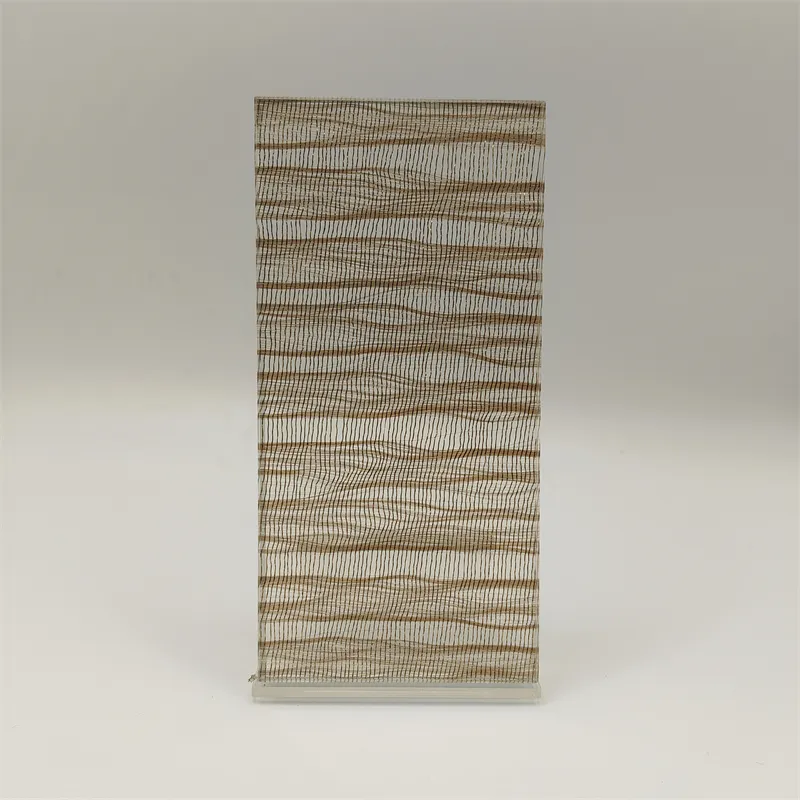Nov . 12, 2024 08:23 Back to list
pattern glass
The Allure of Pattern Glass A Journey Through History and Aesthetics
Pattern glass, often referred to as pressed glass, is a fascinating facet of glassware history that marries functionality with artistic design. Emerging in the early 19th century, this intricate form of glassmaking has captivated collectors and enthusiasts alike, not just for its aesthetic beauty but also for its cultural significance. The evolution of pattern glass reflects the technological advancements of the time and continues to inspire both modern artists and casual admirers.
Historical Context
The advent of pattern glass can be traced back to the Industrial Revolution. Prior to this, handmade glassware was the norm, characterized by its artisanal quality but limited production scalability. The introduction of presses for molding glass in the early 1800s transformed the glassmaking industry. Factories could produce items quickly and in larger quantities, allowing glassware to be more accessible to the general public. This democratization of glassware was a turning point, leading to the creation of various decorative patterns that could easily be replicated.
As manufacturers experimented with molds, an array of designs emerged. Common patterns included hobnail, diamond, and floral motifs, showcasing a meticulous attention to detail that appealed to Victorian sensibilities. The influence of international styles, particularly from Bohemia and England, also enriched the designs. Artisans began to incorporate local elements, blending functionality with beauty in everyday items like tableware, candlesticks, and vases.
Characteristics of Pattern Glass
One of the defining features of pattern glass is its versatility. Made from a basic glass mixture, the glass is heated and then pressed into molds to create the desired patterns. This process allows each piece not only to serve a functional purpose but also to become an objet d'art.
When you look closely at a piece of pattern glass, you will notice how the light interacts with its surface. The textures and designs can refract light in multiple ways, creating a dazzling effect. This captivating play of light is one reason why pattern glass became a staple in fashionable homes during the 19th and early 20th centuries.
The tactile experience of pattern glass also adds to its allure. Each piece invites touch; the raised patterns provide a sensory pleasure that contrasts with the smoothness of untextured glass. Additionally, various colors of glass were produced, ranging from clear and amber to vivid greens and blues, further broadening the aesthetic appeal.
pattern glass

Collecting and Reviving Interest
Throughout the 20th century, interest in pattern glass fluctuated, peaking in the mid-century post-war period when many Americans began to collect items that evoked nostalgia for simpler times. Today, there is a resurgence of interest in pattern glass, driven by both vintage enthusiasts and eco-consciousness, as people look for unique and sustainable decorating options that reflect personal style.
Collectors often focus on specific patterns or manufacturers, such as Indiana Glass, McKee, or Imperial Glass, turning their hobby into a passion for researching historical value and craftsmanship. Online marketplaces and social media platforms have made it easier for collectors to connect, share, and trade pieces, further fueling this enthusiasm.
Modern Interpretations and Artistic Influence
While pattern glass remains a testament to the craftsmanship of the past, contemporary artists and designers have also drawn inspiration from its unique qualities. Modern glass artists often experiment with patterns, textures, and materials, creating works that resonate with the essence of traditional pattern glass while pushing the boundaries of medium and form.
Incorporating technology into glassmaking, artists can create hybrid forms that blend traditional techniques with modern aesthetics, leading to a revival of interest amongst younger generations. Exhibitions celebrating vintage pattern glass alongside contemporary works have emerged, highlighting its timeless relevance in the art world.
Conclusion
Pattern glass serves as more than just a reflection of historical craftsmanship; it encapsulates the intricate relationship between artistry, technology, and society. Its enduring charm continues to intrigue collectors and artists alike, bridging the gap between past and present. As we appreciate the beauty of these vibrant pieces, we honor the craftspeople who contributed to their creation and acknowledge the significant role pattern glass has played in the history of decorative arts. Whether displayed on a vintage shelf or reimagined in contemporary art, pattern glass will forever hold a place of honor in the world of design.
-
Safety and Style with Premium Laminated Glass Solutions
NewsJun.24,2025
-
Reinvents Security with Premium Wired Glass
NewsJun.24,2025
-
Premium Float Glass Line for Modern Architecture
NewsJun.24,2025
-
Low Emissivity Glass for Energy-Efficient Architecture
NewsJun.24,2025
-
High-Performance Insulated Glass Solutions for Modern Architecture
NewsJun.24,2025
-
Elevates Interior Style with Premium Silver Mirror
NewsJun.24,2025
Related PRODUCTS














